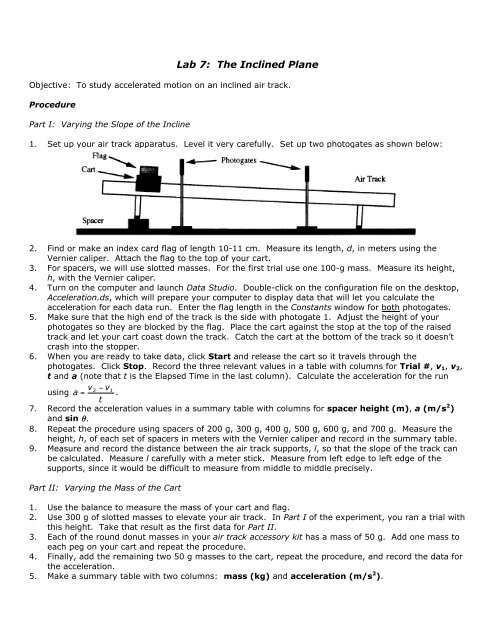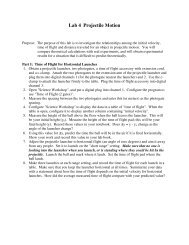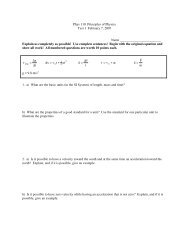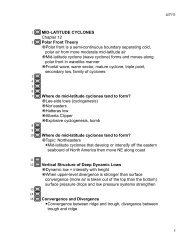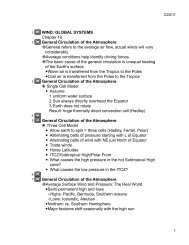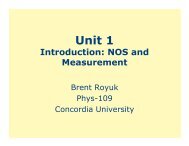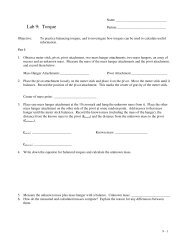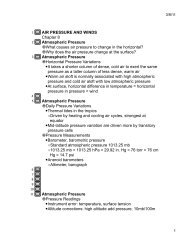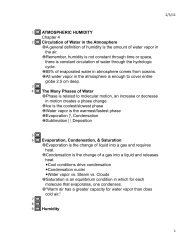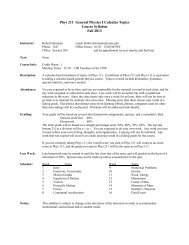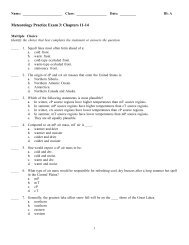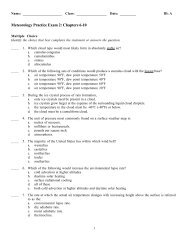Lab 7: The Inclined Plane
Lab 7: The Inclined Plane
Lab 7: The Inclined Plane
- TAGS
- inclined
You also want an ePaper? Increase the reach of your titles
YUMPU automatically turns print PDFs into web optimized ePapers that Google loves.
<strong>Lab</strong> 7: <strong>The</strong> <strong>Inclined</strong> <strong>Plane</strong>Objective: To study accelerated motion on an inclined air track.ProcedurePart I: Varying the Slope of the Incline1. Set up your air track apparatus. Level it very carefully. Set up two photogates as shown below:2. Find or make an index card flag of length 10-11 cm. Measure its length, d, in meters using theVernier caliper. Attach the flag to the top of your cart.3. For spacers, we will use slotted masses. For the first trial use one 100-g mass. Measure its height,h, with the Vernier caliper.4. Turn on the computer and launch Data Studio. Double-click on the configuration file on the desktop,Acceleration.ds, which will prepare your computer to display data that will let you calculate theacceleration for each data run. Enter the flag length in the Constants window for both photogates.5. Make sure that the high end of the track is the side with photogate 1. Adjust the height of yourphotogates so they are blocked by the flag. Place the cart against the stop at the top of the raisedtrack and let your cart coast down the track. Catch the cart at the bottom of the track so it doesn’tcrash into the stopper.6. When you are ready to take data, click Start and release the cart so it travels through thephotogates. Click Stop. Record the three relevant values in a table with columns for Trial #, v 1 , v 2 ,t and a (note that t is the Elapsed Time in the last column). Calculate the acceleration for the runusing a = v 2− v 1.t7. Record the acceleration values in a summary table with columns for spacer height (m), a (m/s 2 )and sin θ.8.€Repeat the procedure using spacers of 200 g, 300 g, 400 g, 500 g, 600 g, and 700 g. Measure theheight, h, of each set of spacers in meters with the Vernier caliper and record in the summary table.9. Measure and record the distance between the air track supports, l, so that the slope of the track canbe calculated. Measure l carefully with a meter stick. Measure from left edge to left edge of thesupports, since it would be difficult to measure from middle to middle precisely.Part II: Varying the Mass of the Cart1. Use the balance to measure the mass of your cart and flag.2. Use 300 g of slotted masses to elevate your air track. In Part I of the experiment, you ran a trial withthis height. Take that result as the first data for Part II.3. Each of the round donut masses in your air track accessory kit has a mass of 50 g. Add one mass toeach peg on your cart and repeat the procedure.4. Finally, add the remaining two 50 g masses to the cart, repeat the procedure, and record the data forthe acceleration.5. Make a summary table with two columns: mass (kg) and acceleration (m/s 2 ).


